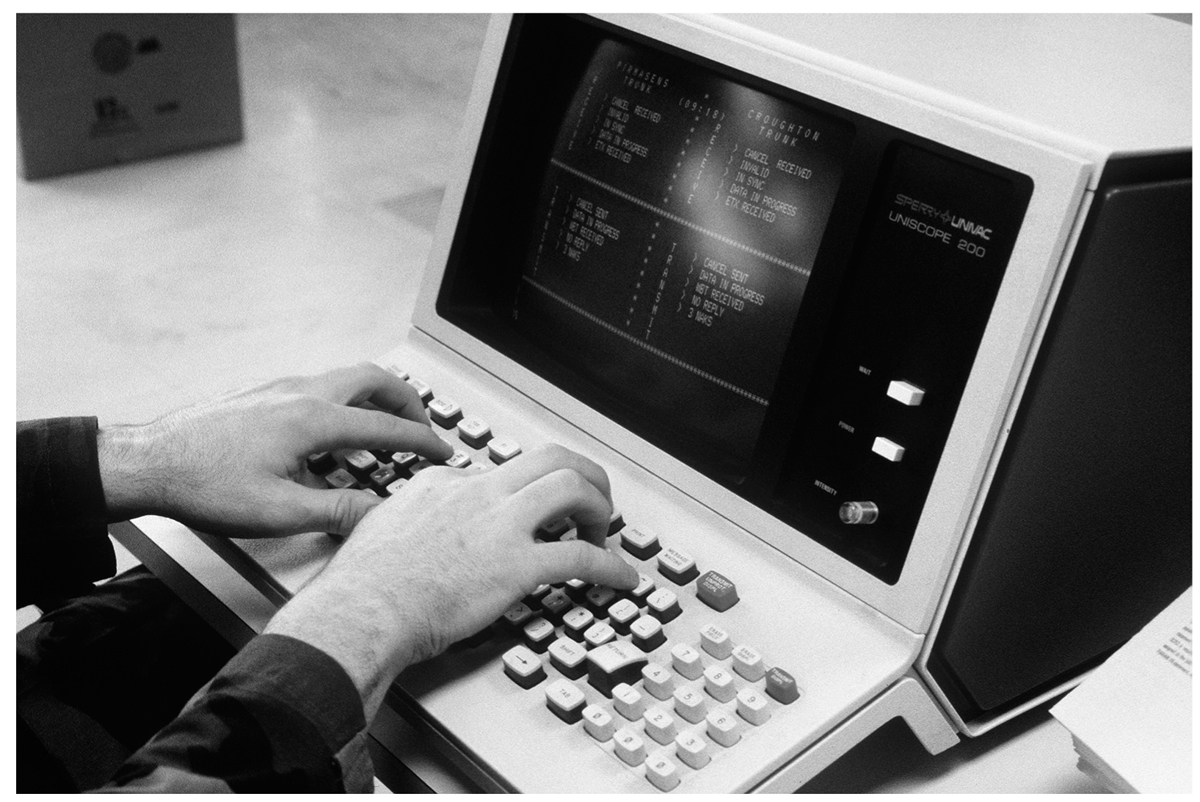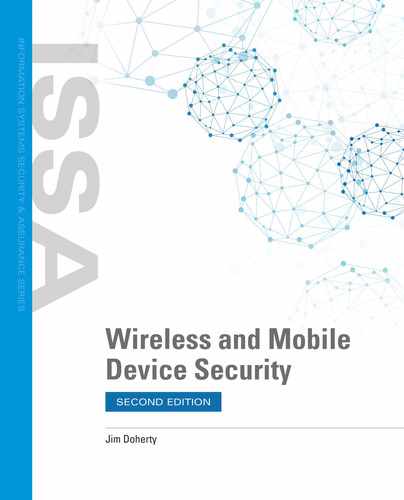The Dawn of Data Communication
Data communication and networking have a long history going back to 1837, when Samuel Morse developed the first practical telegraph system. In 1844, Morse sent his first long-distance message, “What hath God wrought!” encoded in Morse code, from Washington, D.C. to Baltimore, Maryland. By 1850, more than 12,000 miles of telegraph lines traversed the country, run by more than 20 different commercial operators. Telegraphy, as it was known, used start and stop signals of dots and dashes transmitted over copper wires. It was a one-way message protocol that evolved to support two, and then four, channels. Telegraphy monopolized electronic communication until 1877, when the first telephone networks started to appear.
Despite reservations that telephones would be too technical for the common man, telephony was quickly adopted. Indeed, the telephone system quickly usurped telegraphy in terms of traffic carried, revenue generated, and network coverage. Telephony, however, was initially limited to voice. Therefore, despite telegraphy losing out to the telephone as the popular means for interpersonal communications, it remained an effective medium for carrying digital data traffic.
In 1923, the first teletypewriter services came into being, serving the need for true and accurate communications. By 1935, the introduction of rotary dial telex services emerged.
![]() NOTE
NOTE
The network effect is a phenomenon in which a technology becomes more valuable as the number of users or units increases. A common example is the fax machine. The first fax machine was useless, but the second fax machine made the first one useful. As more were added, all fax machines had greater utility.
By the 1950s, the public switched telephone network (PSTN) had become ubiquitous and affordable, in large part due to broad interconnectivity, creating a network effect. The PSTN could interconnect telephones from anywhere in the community, the country, or even internationally over its network of exchanges. To accomplish this, a hierarchy of networks connected local exchange carriers (LECs) with regional, national, and international carriers via interexchange carriers (IXCs). It was this national and international reach that made the PSTN such an inviting medium when it became necessary to network large business computer mainframes.
Early Data Networks
By the late 1950s, there was a demand to network the growing number of business computers being deployed by large companies. These computers were large standalone machines that operated independently. IBM accomplished the first successful interface between two digital devices over the analog PSTN using acoustic couplers and telephone sets. These couplers operated over the PSTN at 300 bits per second (bps). At this point, voice networks and the burgeoning data network began to merge.
FYI
Until the appearance of the personal computer (PC), computers were huge mainframes that often occupied an entire room. Access to these computers was achieved through a “dumb terminal,” which offered a simple text display (often called a green screen due to the green color of the font on the black screen), as shown in FIGURE 1-1. These displays had no computing power; rather, they were simple readout displays.

FIGURE 1-1
A dumb terminal or green screen.
Courtesy of U.S. Department of Defense.
Another significant point in the history of data communications was the transmission of the first fax over the standard PSTN in 1962. This was possible due to the modulation of data into sound by devices called modems, which were attached to either end of the analog telephone lines. A modem, short for modulator/demodulator, was required to transfer digital communications over the analog PSTN for the several decades that followed. Modems convert digital data into an analog signal for transport over the wire. At the other end, the analog signal is demodulated to recover the original digital signal. By using modems, computers that had access to a telephone line could communicate over the analog PSTN.
Soon, however, telephone companies saw the obvious benefits of digital technology and began upgrading their networks. Digital communication was accepted as technically superior to analog. Furthermore, digital technology had become both cheaper and more reliable, which made it suitable for transmitting voice communications.
Digital communications have the following advantages over analog:
- More efficient use of bandwidth
- Greater utilization
- Improved error rates (that is, fewer errors)
- Less susceptibility to noise and interference
- Increased throughput
- Support for additional services (such as caller ID, auto-forwarding, and call waiting)
As telecom providers rolled out new digital networks, high-speed digital communication became a widely available service.
The innovation that enabled the technological leap in long-distance digital communication was packet switching, used in lieu of circuit switching. In circuit switching, a physical connection was made between two phones using a series of telephony switches, creating an electric circuit. While the circuit was in use, no other phones could use the wires connecting the two phones. This was very inefficient because conversations—even among chatty people—are in fact about 50 percent silence when you account for the pauses between words and between speakers. It was also very expensive, especially on long-distance calls, because the callers had to “rent” the exclusive use of a circuit that was almost always in demand.
There were also concerns with circuit switching regarding the resilience of the message path. Circuit switching restricted communications to a preprovisioned point-to-point circuit for the duration of the call. Should any intermediary exchange along the message path fail, the circuit was lost and had to be reprovisioned. Ideally, the call would be automatically rerouted over a different path. However, that required multiple paths to any given destination and an awareness of alternative routes to the destination, which greatly increased the user cost.
In packet switching, the voice signal is first digitized and then chopped up into a series of packets. These packets contain the voice information along with the source and destination. The packets are then forwarded from the source to the destination. Taking advantage of the silent gaps, packets from multiple conversations can share the same circuit, making packet switching much more efficient. Additional efficiencies were created through the development of digital compression techniques so that many of today’s conversations exist on the same wires.
Packet switching is also much more resilient to circuit switching. Packets can take multiple paths from source to destination, so there is no dependence on a single circuit. Also, because each single packet is such a small fragment of the speech signal, many packets can be lost or dropped without noticeably affecting the quality of the call. With packet switching, if any one circuit or exchange fails, the packets are rerouted. Any dropped packets are simply ignored. As it turned out, packet switching was also key to modern data communication.
Not surprisingly, the military was very much involved in developing packet switching. Its interests lay in the possibilities of high-speed failover and resilient data communications under battlefield conditions.
The Internet Revolution
This interest led to the U.S. government’s creation of the Advanced Research Projects Agency (ARPA) to research and develop computer networks. The results of the ARPA project were the design, creation, and development of the ARPANET, the first computer network based on packet switching.
The ARPANET project was the predecessor of the modern Internet. However, during the 1970s and 1980s, it was a noncommercial network developed and used by universities and research institutions. During this period, despite being little known and seldom used, the ARPANET project developed several key protocols—one of the most important being the Transmission Control Protocol/Internet Protocol (TCP/IP). TCP/IP would become the protocol of the Internet in the early 1990s.
During that same period, many local area network (LAN) technologies vied for supremacy. Several proprietary networking protocols were prevalent and vied for market dominance. The problem was that the proprietary protocols were not compatible. That is, LANs using different protocols could not be connected to each other. The challenge was to connect all these different operating systems and protocols into one heterogeneous network. By the early 1990s, a clear winner had emerged in the LAN technology war: the Ethernet protocol. It became the ubiquitous LAN network standard protocol across the globe. Thirty years later, Ethernet is still the dominant LAN protocol.
APRA was more than LANs
ARPA also went on to create what would become the standard methods of connecting business computers and networks over long distances. These wide area networks (WANs), as they are known, were point-to-point or point-to-multipoint topologies, which enabled companies to connect networks and computers in cities and countries across the globe at high speeds and high throughput.
Advances in Personal Computers
Digital communications were not the only technology growing by leaps and bounds. Within businesses themselves, a revolution was occurring that spelled the end of the road for the huge mainframes and their dumb terminals.
The IBM PC was launched in the early 1980s. It immediately caught the attention of businesses and became popular for running standalone word processing and accounting packages. But because most of the business data resided on the mainframe, both a PC and a mainframe terminal (the “dumb” screen connected to the mainframe) were required on the desktop. Not only was that inconvenient but there was also no easy way to transfer information from the mainframe to the PC applications for local processing. The solution was to connect each PC to the mainframe by networking them over a LAN and harnessing the growing processing power of PCs by just connecting them directly to each other over the LAN. This made the dumb terminal redundant as PC sales skyrocketed and the computer networking industry exploded. Up to this point, however, if you wanted to connect a device to a network or to the Internet, you had to physically connect the device via an Ethernet connection or via a modem connected to the PSTN. However, all of this was about to change with the advent of wireless networking.
